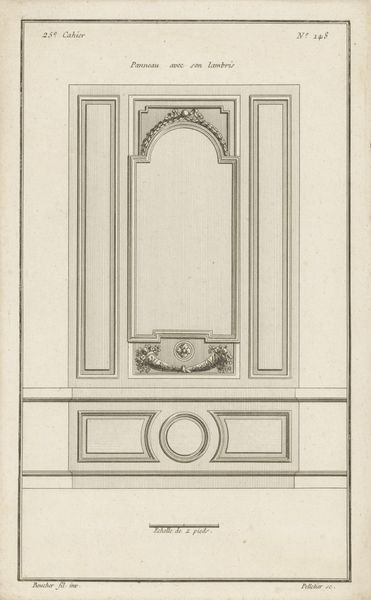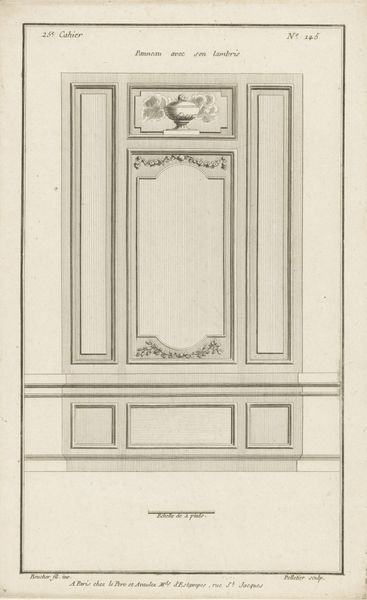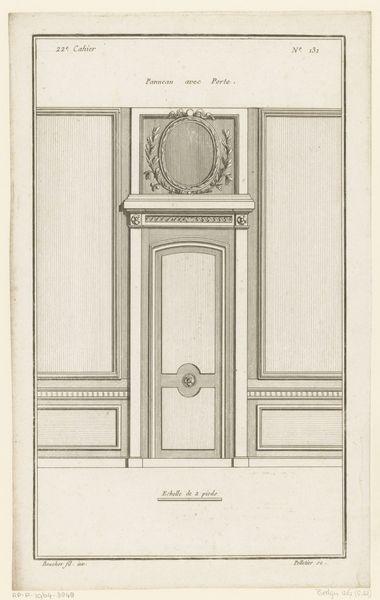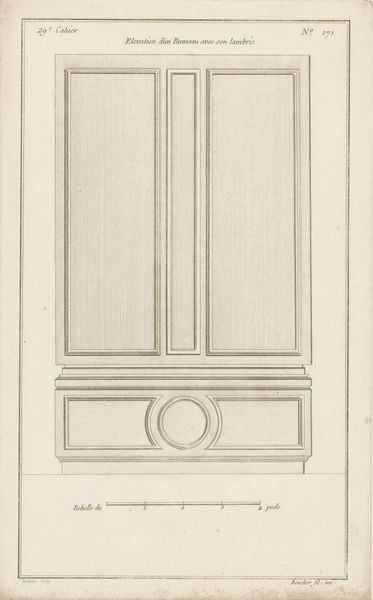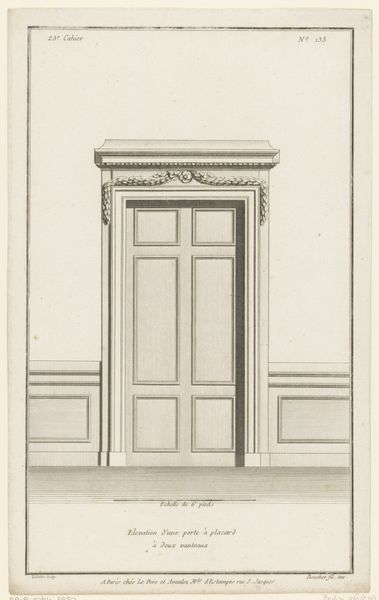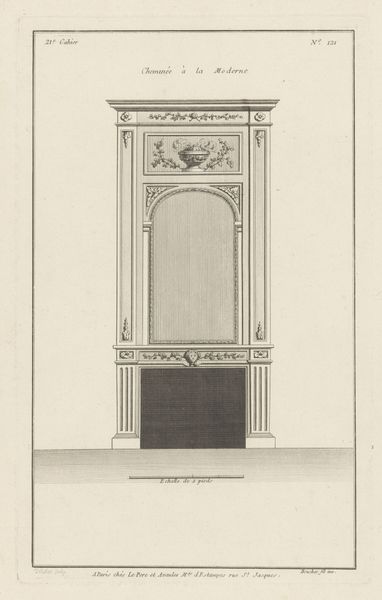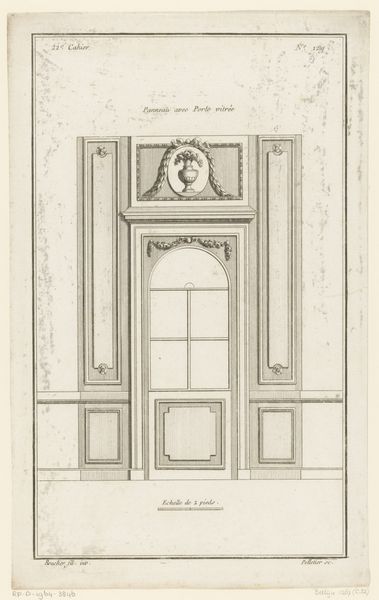
drawing, paper, engraving, architecture
#
drawing
#
neoclacissism
#
paper
#
geometric
#
engraving
#
architecture
Dimensions: height 328 mm, width 203 mm
Copyright: Rijks Museum: Open Domain
Curator: Looking at this drawing, "Panelen met masker," created by Jean Pelletier between 1772 and 1779, currently held at the Rijksmuseum, what’s your initial response? Editor: My first thought is how meticulously balanced it is. The symmetry feels very classical, very measured and restrained. Yet, there's something playful hinted at with that small mask detail. Curator: It certainly embodies Neoclassical principles, doesn’t it? Pelletier, in this engraving, presents us with a design for wall panels, reflecting the era's fascination with geometric order and classical motifs. The mask, as you pointed out, provides an intriguing focal point. Masks carry powerful cultural associations, often tied to ritual and transformation. In this domestic interior, is it mere decoration, or is there something more? Editor: That’s precisely where my interest lies. The positioning feels quite deliberate, drawing your eye to that central space of the panels. During this period, interior design became a powerful signifier of social standing and cultural aspirations. Curator: Indeed. The rise of the bourgeoisie saw art and design deployed to construct identities. These wall panels evoke classical virtues—harmony, balance, order—qualities that would appeal to a rising merchant class keen to associate itself with the cultural legitimacy of antiquity. But the single, miniature theatrical mask adds an element of drama. It might suggest the owner's cultivated interest in theatre or serve as a subtle statement of intellectual refinement. Editor: I think it introduces an element of wit to an otherwise quite formal composition, possibly signalling a cultivated taste for art and knowledge. One could imagine intellectual gatherings happening in rooms featuring designs like these, conversation sparkling beneath the gaze of that little mask. Curator: And these designs played a crucial role in spreading neoclassical ideals to a wider audience. Through engravings like these, the style permeated architecture, interior design, and even furniture across Europe. Pelletier's drawing highlights how visual culture participates in shaping values, beliefs, and even aspirations. Editor: So, much more than a drawing of a wall: it represents the social, economic, and intellectual movements swirling in late 18th-century Europe. I'll look at Neoclassical interiors quite differently now.
Comments
No comments
Be the first to comment and join the conversation on the ultimate creative platform.

